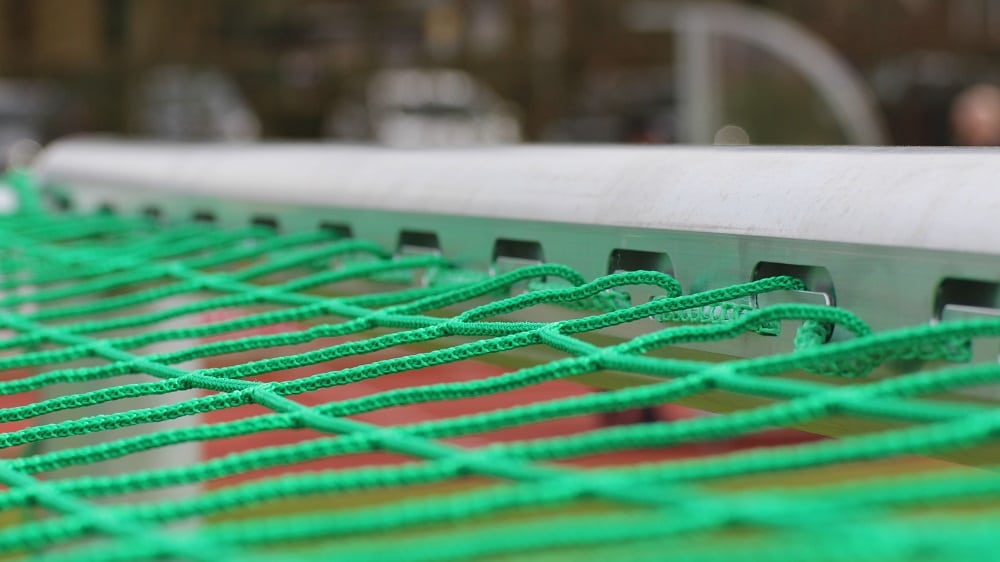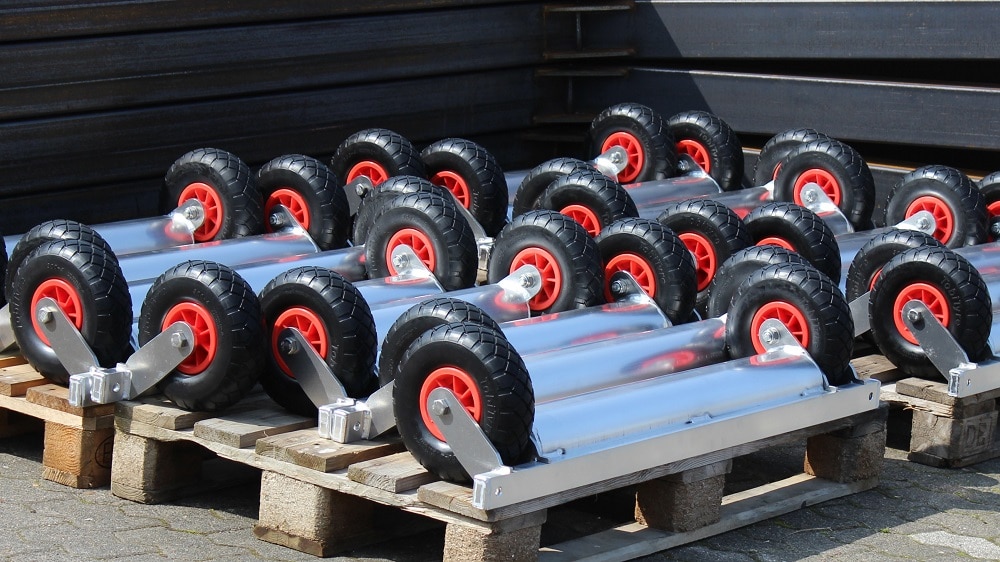
Answers from the manufacturer
Why is the safety of sports equipment so important?
[fusion_text]The safety of the athletes should always be the highest priority. This applies equally to all sports. Therefore, when building sports equipment, it is important that the valid DIN standards are met and the products have certificates that ensure the safety and technical requirements. This will ensure that safe sports equipment is used on the sports facilities.
In particular, the safety of soccer goals always plays an important role at artec®, as this is an issue that affects a large number of sports clubs. In addition, the lack of safety of soccer goals has already led to serious accidents in the past. Therefore, in our role as manufacturers, we want to educate people about the safety of sports equipment and soccer goals.
What needs to be considered when it comes to the safety of soccer goals?
Anti-tilt: For soccer goals, stability is an important issue. As is known, soccer goals on sports fields are often used as mobile goals so that they can be used flexibly. However, the advantages in handling also have disadvantages in terms of safety when mobile goals are subject to dynamic forces, such as those that repeatedly occur in match operation. Here it is necessary to establish reliable stability in accordance with the applicable rules. The idea of children and young people climbing up the goal is also not fundamentally absurd. Accordingly, it is imperative to attach suitable counterweights to the goal to reliably prevent it from tipping over. Additional warnings must also be placed indicating the risk of tipping.
Net hooks: In the case of net hooks, it is important to note that open net hooks made of metal are not permitted due to the risk of injury. Care must also be taken with plastic net hooks to ensure that they do not have openings between 8 and 25 mm. The purpose of avoiding these so-called “finger catching points” is to ensure that athletes do not get their fingers caught in the eyelet. Milled-in net suspensions, where the goal net is attached directly in the goal post and batten profile, are a very safe variant of net suspension. There are no protruding corners and edges, so the safety of the sports equipment is ensured.

Other requirements: Soccer goals should also be checked to ensure that the goal and ground frames are properly bolted or welded together to ensure structural stability. In addition, no pointed or sharp edges or screws should protrude.
What is the best way to secure the goal?
Stationary soccer goals can be firmly anchored to the ground using ground sockets or ground anchors. This form of installation is basically the safest and most stable variant. Mobile goals can also be firmly anchored to the ground with ground nails or ground spirals as an alternative to securing them against tipping over with counterweights. However, here you need to make sure that the nails and spirals are long enough and stable, and most importantly, do not forget about the installation.
For mobile goals, it is important that the anti-tip device is firmly attached to the soccer goal. Therefore, experts advise to use fixed and already filled counterweights. On the part of artec® Sportgeräte, we advise against cheaper sand fillings, as these are not assembled ex works and it is also not ensured on the sports facility that the sand filling is guaranteed at all times. Uncontrolled sand discharge can also lead to the erroneous assumption that the goal is stable – when in fact this is not the case.
What counterweights are needed for training and youth goals?
The safety of soccer goals results from the regulations of the municipal accident associations as well as DIN/EN 748. There it is specified that mobile soccer goals must be equipped with ground anchors (e.g. ground sockets, ground anchors, etc.) or suitable counterweights must be used to provide the necessary stability. Here, the counterweights raise the question of what weight is needed and what technical solution should be used to achieve tilt-resistant soccer goals.
It should be noted that different counterweights are required depending on the type of goal and the rear outreach. Many wonder how much counterweight needs to be attached to the soccer goal to actually keep it from tipping over. To achieve the stability of 1,100 N specified in DIN/EN 748, a counterweight of 200 kg is required, for example, for a soccer goal with a 1.0 m outreach! In contrast, with an outreach of 2.0 m, a counterweight of 100 kg is already sufficient. We have compiled a complete overview of the necessary counterweights for the anti-tilt devices of various goals and outreaches below:
The guidelines regarding the anti-tipping of goals should also be followed without fail due to existing liability risks for club officials and volunteer coaches and trainers.
How is the safety of sports equipment manageable in practice?
If mobile goals are equipped with anti-tilt, then, of course, they are heavier. So that the training or youth goal can still be moved around the sports field, it is useful to mount wheels as well.
artec® offers an anti-tip technology where the wheels are fixed directly ex works. This provides customers with a practical all-in-one solution. The artec® anti-tip system offers customers an optimal solution when it comes to handling on the sports facility while ensuring the safety of the athletes. Due to the massive and very robust construction of the artec® anti-tip devices, which are characterized by a steel weight (steel core filling) embedded in an aluminum profile, excellent safety is guaranteed at all times for training and match operations. Due to the puncture-proof, foamed pneumatic wheels (two wheels per weight), very good running characteristics are achieved, which enable optimal maneuverability of the soccer goals on the sports field. Here, the optimum ground clearance of the goals should be mentioned, especially in the tilted state, as this allows problem-free passage through e.g. trough channels!

And finally, a note on storage: when the goal is not in use, it should be stored away from the playing field and obstacle-free space – be sure to secure it against tipping. Optimally, two mobile goals are placed with the open side against each other and firmly connected. This can prevent accidents due to the tipping of the goal.
Do you have questions about the safety of sports equipment?
Since artec® Sportgeräte has already established a proven system for the anti-tilt safety of soccer goals on the market for many years, we can of course immediately assist our customers with advice and support if necessary! Let us advise you on the safety of sports equipment and also convince yourself of our great products. You can reach us by phone at 05422/9470-0, or you can send us an e-mail to the following address: info@artec-sportgeraete.de. Further details on products and projects can also be found under the following links:
- Sturdy soccer goal directly from the manufacturer
- Aluminum volleyball posts
- Stable field hockey goal – safe goal made of aluminum
- Buy handball goal at artec® Sportgeräte
- Outdoor basketball equipment and basketball stands
- Soccer boards for mini pitch or sports field
- Fully welded and durable recreational goal
